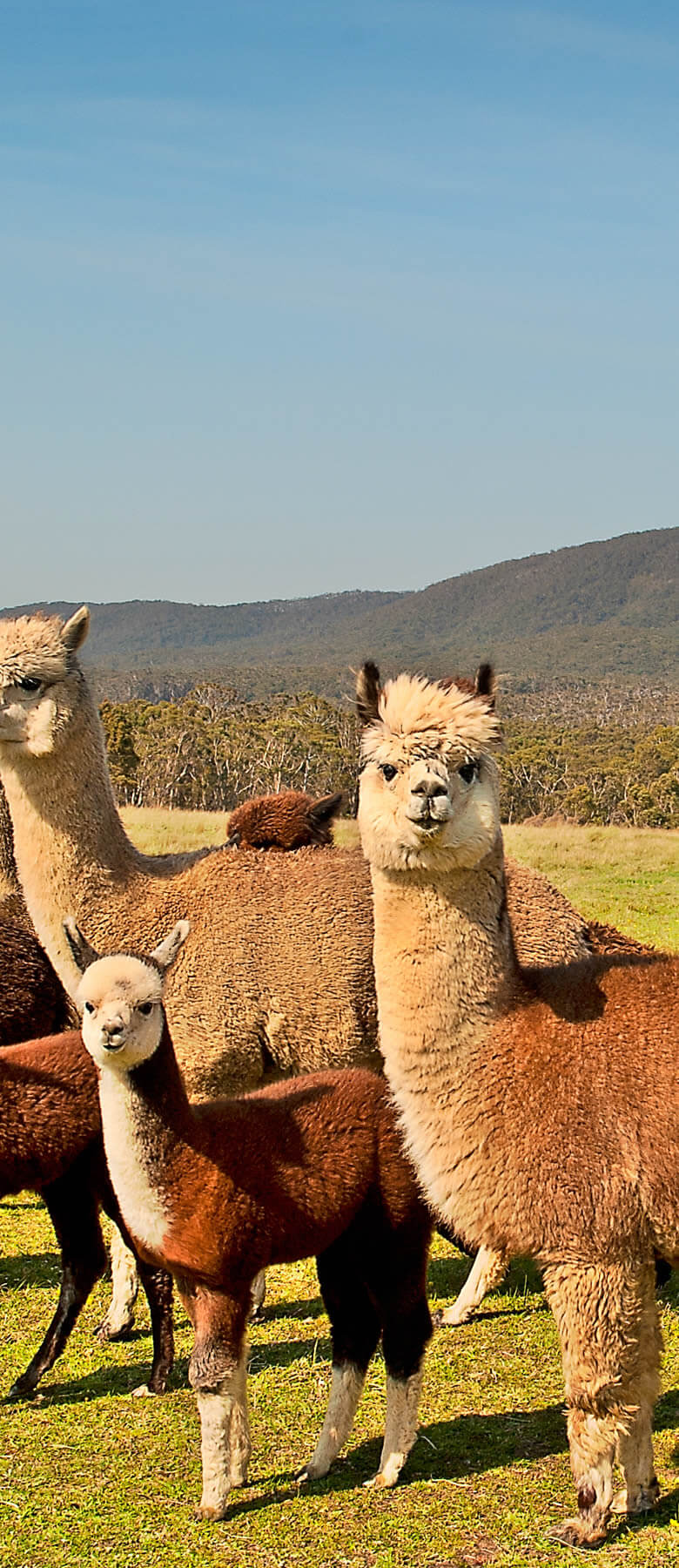Understanding Fleece Results
Testing and then understanding fleece testing results is invaluable to alpaca breeders. It allows stud owners to make educated and informed decisions in their breeding programs. It also gives breeders information on the quality of their fleece in regards to processing into products.
If you are interested in learning about how to manage your alpaca fleeces from shearing, skirting, storing and processing please contact your regional president. With enough interest, the region will run a Shearing, Skirting and Fleece Preparation Workshop.
How to Take a Fibre Sample
The main points to note regarding mid-side sampling are as follows:
- Always use the same sample site. This will enable you to effectively compare results. The preferred and most commonly used site is the mid-side. The mid-side is located half way between the fore and hind leg and half way down the body mass. The left hand side of the alpaca is normally used for the mid-side as the right side is exposed to judges when showing.
- To breed for reduction in variation of fibre diameter across the fleece, three sample sites may be used. In this case, the mid-side, the shoulder area and the pin-bone (hip) are recommended.
- For OFDA2000 testing, the size of the fibre sample needs to be only the width of two fingers.
- When cutting the sample from the alpaca, ensure the sample is taken as close to the skin as possible so that a complete test analysis can be conducted on the whole length of fibres.
- Place the sample in a paper bag. If a plastic bag is used, the bag should not be sealed as condensation build-up can distort the fibre measurements. Record the alpaca’s name and/or tag/IAR number on the bag.
- Send the samples to your preferred fibre test provider.
Interpreting Test Results
Micron is the unit of measurement for describing diameter of fibre. 1,000 microns = one millimetre. Fibre diameter is the single most important fibre trait with regard to commercial processing. It is also one of the most heritable fibre traits.
Micron Deviation (MD) is the extent to which a sample deviates from the herd’s average.
Standard Deviation (SD) tells you how similar in micron the fibres are across the sample (also referred to as the “uniformity” of the sample). What the SD is actually telling you is how the micron of the majority of the fibres in the sample are spread either side of the mean. For example, if the Mean Fibre Diameter is 20µ and the SD is 4µ, this means that two-thirds (66%) of the fibres in the sample are between 16µ (4µ below the mean) and 24µ (4µ above the mean). An SD below 4.5µ is good; even lower will greatly enhance the value of the fibre for the processor.
Fibre curvature (CRV) is expressed in degrees/millimetre and generally, higher curvature is associated with higher crimp frequency.
Spin Fineness (SP) is a calculation using micron and CVD to represent the spinning quality.
Staple length (SL) is expressed in millimetres. Staple is another term for fibre bundle.
Coefficient of Variation of Diameter (CFD) is the standard deviation expressed as a % of the sample’s average. For example, if the average diameter is 20.0 microns with a SD of 5.0 microns, the CVD is 25.0%. (5/20 x 100).
Comfort Factor (CF) is the percent of fibres in a sample that are equal to or less than 30 microns. Fibres greater than 30 microns are generally responsible for the prickle sensation when worn next to the skin.
Coarse Edge (CE) is the % of fibres in a sample that are greater than the sample’s average by 10 microns.
Micron Profile is a graph showing the variation of fibre diameter along the staple. Can be used for analysing the nutritional intake over the growing season.
Histogram is a bar graph depicting the distribution of fibre diameter for the sample. On the vertical (y) axis of the graph is the micron of the fibre counts. On the horizontal (x) axis are a series of numbers which represent the frequency of distribution of those fibres counted.


